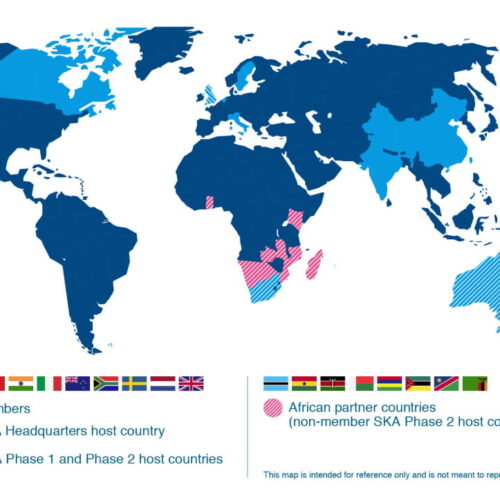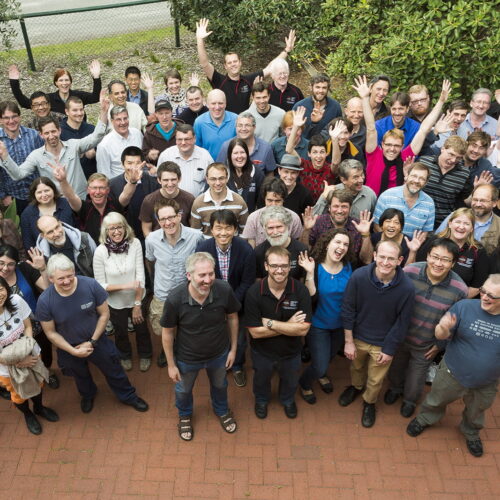The Square Kilometre Array (SKA) is a multi-billion dollar international project to build the world’s largest radio telescope.
Co-located primarily in South Africa and Western Australia, the SKA will be a collection of hundreds of thousands of radio antennas with a combined collecting area equivalent to approximately one million square metres, or one square kilometre.
The project is one of the largest scientific endeavours in history and will be more than 10 times more sensitive and much faster at surveying galaxies than any current radio telescope. The unprecedented flow of data from the telescope will be supported by supercomputing facilities with several times the processing speed of any current supercomputer and one trillion times the computing power that landed men on the Moon.
The SKA will use three different configurations of radio antennas – Australia’s Murchison region will host the low-frequency component, whilst the mid to high frequency infrastructure will be based in South Africa’s Karoo desert. Construction of the SKA will be completed in two phases, with Phase 1 due to begin later this decade and early science expected at the beginning of next decade.
SKA Project Office Website Australian SKA Project Website SKA SITE VIRTUAL TOUR
SKA Prospectus
SKA Australia
Through great leaps in our ability to observe the cosmos, the SKA is aiming to solve five fundamental and long-standing mysteries of the Universe:
How did the first stars, galaxies and black holes form?
With its incredible sensitivity, the SKA will look back 13 billion years in time to the Universe’s Dark Ages. At this point in the Universe’s infancy, the opaque plasma created by The Big Bang recombined to form the first neutral particles which collapsed into the first stars and galaxies.
Is Einstein’s Theory of Relativity correct?
Einstein’s famous Theory of Relativity predicts that moving objects cause ripples in the fabric of the Universe, spacetime. These fluctuations are called gravitational waves and, since the most powerful sources are so distant, they are extremely weak by the time they reach Earth and have eluded scientists for nearly a century. The SKA’s extraordinary sensitivity will allow us to indirectly study gravitational waves from powerful cosmic processes, such as a pair of orbiting black holes.
Are we alone in the Universe?
The extreme sensitivity of the SKA is also expected to reveal new planets outside our solar system – exoplanets – some of which may be capable of supporting life. The SKA may even detect transient signals from extraterrestrial life itself, proving that we are not alone in the Universe.
What is dark matter and dark energy?
More than three-quarters of all matter in the Universe cannot be directly observed because it does not absorb light. This matter is called ‘dark matter’ and its nature remains one of the greatest mysteries in the Universe. Mass distribution in the Universe can also be affected by an enigmatic force that pulls matter apart, called ‘dark energy’. The rapid survey speed of the SKA will produce detailed maps of the mass and motions in millions of galaxies, helping us to deduce the nature and abundance of dark matter and dark energy in the Universe and to refine our cosmological models.
What drives cosmic magnetic fields?
Magnetic fields pervade the entire Universe and affect the way stars form and galaxies evolve. Most sources of cosmic magnetism produce very weak emissions, which makes them very hard to detect. The sensitivity and survey speed of the SKA will revolutionise the study of cosmic magnetism by detecting these weak emissions from billions of distant galaxies, creating three-dimensional maps of cosmic magnetism throughout the Universe.


